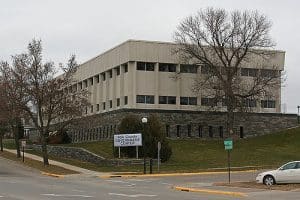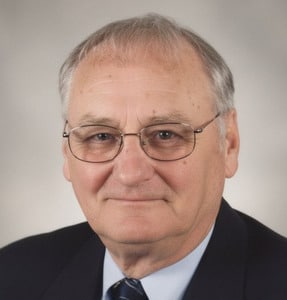The Polk County Commissioners met on Tuesday and received program updates from North Country Food Bank and from Planning and Zoning.
NORTH COUNTRY FOOD BANK UPDATES
The North Country Food Bank moved to East Grand Forks in January 2020 and recently held a grand opening in November 2023. The new location is approximately 35,000 square feet, which has helped store more product and volunteers in recent months. “The building is fantastic and is much larger than what we had here,” said North Country Food Bank Director Susie Novak-Boelter. “Having more warehouse space is huge for us, especially at this time when there is so much need across the communities that we serve, if we didn’t have the ability to store that food we’d have a difficult time getting the product to the agency partners.”
Since relocating to East Grand Forks, finding volunteers to work at the food bank has been more straightforward. Novak-Boelter explained that being the location has allowed larger communities in the area, such as Crookston and East Grand Forks, to bring more volunteers to the centrally located building. “Crookston was great with providing volunteers, but with the amount we use in a town of 8,000,” said Novak-Boelter. “You end up having people wearing out, and so you need to pull from a bigger base. We use 10,000 volunteer hours a year, and that’s a lot for a community like the size of Crookston.”
The North Country Food Bank distributed approximately 6.3 million pounds of food, which equates to nearly 5.5 million meals across its service area. Polk County’s distribution saw a 25% increase in 2023 from its previous year. “Our overall distribution was up 18% in 2023, and usually it increases 3%,” said Novak-Boelter, “So 18% is a huge jump. We’re seeing a larger number because people need help right now due to high inflation, high food costs, and the cost of living is expensive. So many people are struggling.”
POLK COUNTY PLANNING AND ZONING
Jacob Snyder of Polk County Planning and Zoning approached the board seeking approval of two satisfaction loan repayments from anonymous participants regarding the Septic System fix-up program. “The first program we ran, we used our state funding to upgrade the systems and used it as a loan program,” said Snyder, “So we were giving 25% to the septic system as a grant, and the remainder would go toward a ten-year repayment term.”
The two applicants will be paying back $760 per year (until the loan is paid off) with 0% interest. The funds will paid back and will go back into the septic system fix-up program to be disbursed to future applicants. The board approved the loan repayment plan.
The final item the board approved was the 1W1P (one watershed, one plant) Sand Hill Watershed Implementation agreement, in which Polk County would partner. “The one watershed one plant is a ten-year water plant,” said Snyder, “The board of water and soil resources funnels money into the watershed district and various projects, and all partners can leverage those funds. For example, if the county needed a ditch re-fixed, or if it meets the criteria of one watershed, one plant would fix it.” The board ultimately approved the partnership in the agreement. Polk County will now be able to leverage state funding to allocate toward fixing streams, ditches, and anything that meets the criteria of the agreement.
The consent agenda included the approval of the January 23 meeting minutes. It also included the approval of bills and disbursements in the amount of $9,823.19. The Polk County Commissioners meet again on Tuesday, February 20, at the Polk County Government Center.

Tags:



